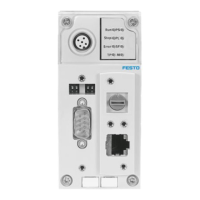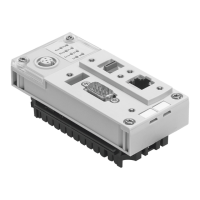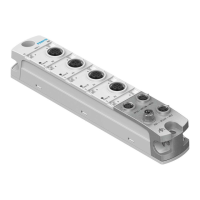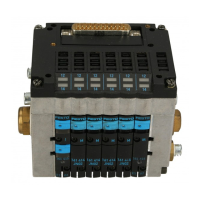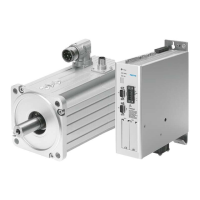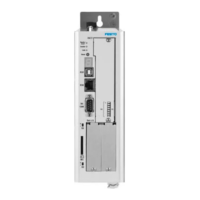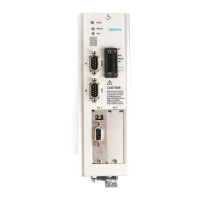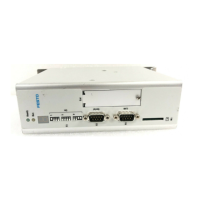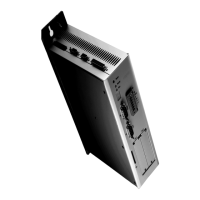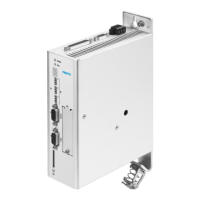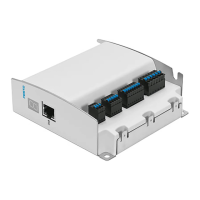3. Drive functions
3−7
Festo P.BE−CPX−CMA X−CONTROL−EN en 0908NH
3. At standstill: Force ramp until tar get force has been reached
(phase 6).
The target force is approach e d with the set force ramp.
4. Once the axis has reached the target force, fulfilling the MC
conditions, MC is set ( 7 ).
Notes:
If there is a stop" or error F1 (controller active), position
con t ro l is
swit ched to (setpoint positio n = actual positi on,
etc.).
If the limit monitoring responds, rega rdl e s s of whethe r
stroke or speed, the controller always changes to position
con t ro l . See also Fig.3/2, monitoring functions.
The speed is limited to the value in the Vel ocit y" parameter.
Prepositioning can be deactivated by V
feed
=0 . See also
Fig.3/2, monitoring functions.
If pre−positioning be used together with a large target force,
it is better to use record chaining. In the first record, a force
is specified which lie s a little above the break−away force, so
that drive safely switches to pre−positioning. In the second
reco rd, the final target value
is established, switching will
con ti n ue after MC. The force upon workpiece impact is then
limited and the force ramp required is used in the range
between the first and the final target force.
The force setpoint may have the value 0 (no force").
Relative force tasks following positi oning tasks refer to
force 0.
Depending on the parametrisation, the actual position or
actual force is acknowledged as the primary actual value
(PNU 523).
Continuous setpoint tracking in force mode is not supported
and leads to a fault.
Force control outside the software end positions is not
permitted and will lead to a fault.
With force control, it might
be necessary to optimize the
con t ro l factors more often than with position control.
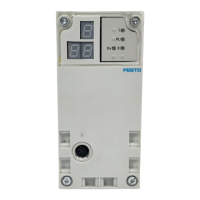
